Creating a fine dining restaurant involves more than just serving exquisite food. It’s about crafting a luxurious experience that delights the senses and leaves a lasting impression. From the ambiance and layout to the uniforms and service style, every detail must work together harmoniously. This is what you need to know when it comes to designing a luxury fine dining restaurant that stands out.
1. Define Your Concept and Theme

The foundation of any fine dining establishment lies in its concept and theme. This defines the personality of your restaurant and informs every design decision you make. Are you offering a modern take on traditional French cuisine or creating a luxurious seafood dining experience by the coast? Your theme will guide everything from the color palette to the menu design.
When defining your concept, consider your target audience and the emotional response you want to evoke. For example, a high-energy urban fine dining venue might use bold colors and modern art, while a countryside escape may incorporate softer tones, natural materials, and rustic decor. Ensure your concept resonates consistently across all touchpoints, including the name of your restaurant, the branding, and even the way your staff interacts with guests.
2. Prioritize Ambiance and Fancy Restaurant Layout

In a fine dining setting, ambiance is everything. Guests expect a seamless blend of comfort, elegance, and intimacy. Lighting plays a critical role in setting the mood. Use a combination of dimmable overhead lighting, candles, and accent lights to create a warm and inviting glow that complements the overall aesthetic of your space. The lighting should be soft enough for an intimate experience but bright enough for guests to comfortably read menus and admire their food.
The restaurant layout should ensure that each table has adequate space for privacy and comfort. Crowded seating arrangements can detract from the fine dining experience, so prioritize fewer, well-placed tables over maximizing capacity. Additionally, think about the flow of your dining room and how it integrates with the kitchen. Waitstaff should be able to navigate effortlessly, ensuring smooth and discreet service.
3. Invest in High-Quality Tableware and Linens
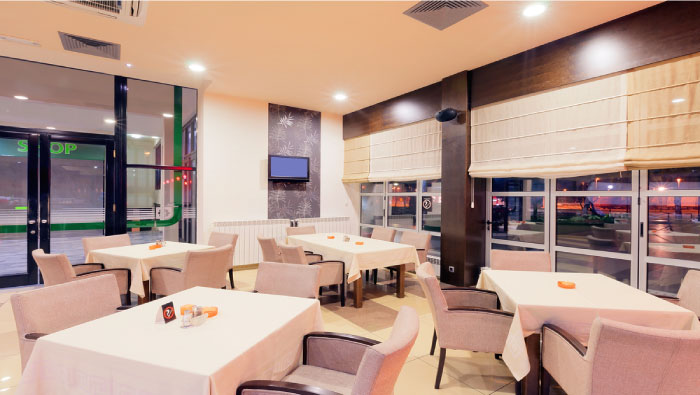
In fine dining, every detail on the table contributes to the overall experience. Premium tableware not only complements the food but also enhances its presentation. Select plates and bowls with unique designs that align with your concept—perhaps hand-glazed ceramics for a rustic theme or sleek, minimalist porcelain for a modern setting. High-quality glassware and cutlery are equally important and should feel luxurious to the touch.
Linens play a subtle yet crucial role in setting the tone. Crisp white tablecloths evoke classic elegance, while darker tones or textured fabrics can add a contemporary edge. Don’t overlook napkins and placemats; these should be impeccably clean, soft to the touch, and harmonized with the rest of your design.
4. Incorporate Sustainable Practices
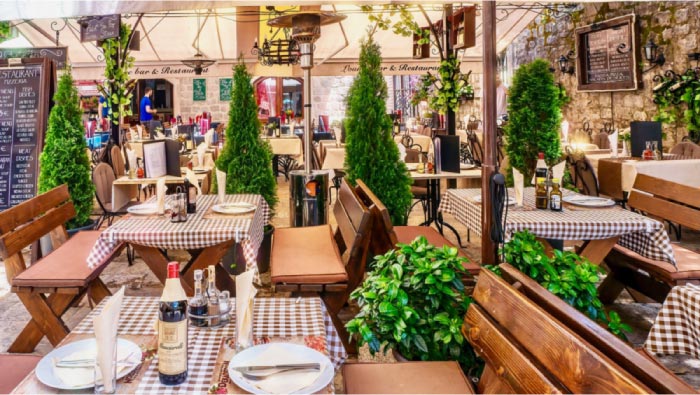
Sustainability has become a vital consideration in the restaurant industry, particularly in fine dining, where customers expect establishments to lead by example. By incorporating eco-friendly practices, you not only appeal to environmentally conscious diners but also enhance your brand’s reputation as a thoughtful and progressive business. Look into the following:
- Sustainably Source Furniture and Décor
Choose sustainably sourced materials for your furniture and decor. Reclaimed wood, recycled metals, and energy-efficient fixtures add character to your space while reducing your environmental impact. Consider incorporating greenery into your interior design as well—living walls or potted plants can add a fresh, natural element to your restaurant while improving air quality.
- Get Chef Uniforms Made from Environmentally Friendly Materials
Uniforms are more than just practical attire for your staff—they are a visual extension of your restaurant’s brand. For fine dining establishments, where attention to detail is paramount, chef uniforms should exude professionalism and sophistication while reflecting modern values, such as sustainability. Chef uniforms made from organic cotton, recycled polyester, or other sustainable materials are a testament to your commitment to reducing environmental impact. Not only do they align with eco-conscious dining trends, but they also offer practical benefits like breathability, durability, and comfort for your kitchen staff.
Modern chef uniforms made from environmentally friendly materials come in elegant designs that complement the refined ambiance of a fine dining restaurant. For example, tailored chef coats with sleek lines or aprons made from organic fabrics can seamlessly blend functionality with aesthetic appeal. By investing in these uniforms, you demonstrate that sustainability is integrated into every facet of your restaurant, making a positive impression on diners who value ethical practices.
5. Design an Open Kitchen
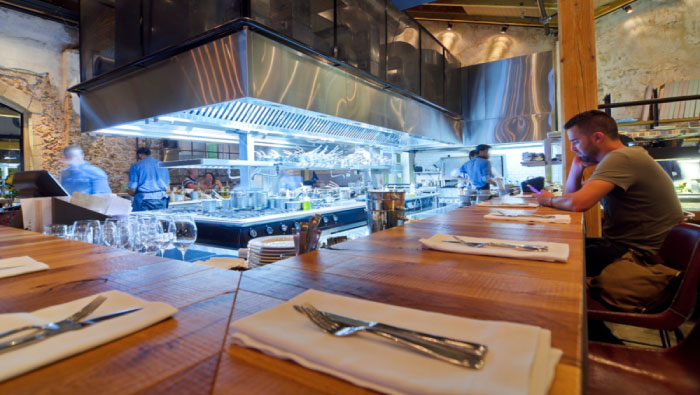
An open kitchen can add a captivating element to your fine dining experience. It allows guests to witness the artistry and precision behind their meals, adding a layer of transparency and excitement to their visit. If you choose to feature an open kitchen, it must be impeccably organized and spotless at all times.
Careful thought should go into the design of an open kitchen to ensure it complements the dining room aesthetic. Materials like stainless steel, tempered glass, and marble create a polished, high-end look. Additionally, ensure that the sound of the kitchen is well-managed to avoid disrupting the tranquil dining atmosphere.
6. Focus on Service Excellence

Service is the hallmark of a fine dining experience. Every aspect of your staff’s interactions with guests should reflect professionalism, attentiveness, and warmth. Train your team to anticipate diners’ needs, from refilling water glasses to recommending wine pairings, without being intrusive.
Consistency is key—standardize service protocols to ensure every guest receives the same level of care, whether they’re a first-time visitor or a regular patron. Staff appearance is also important; polished, well-fitted uniforms enhance the sense of sophistication and reinforce your brand identity.
7. Partner with Artisans for Unique Decor
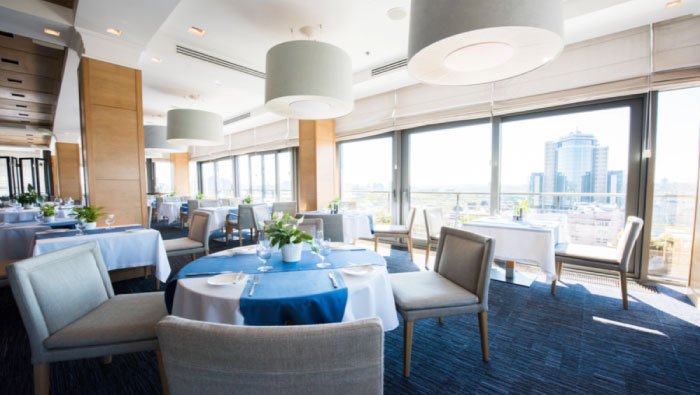
Fine dining is about creating a unique and memorable experience, and one way to achieve this is by incorporating custom artwork or handcrafted decor. Partner with local artisans to commission pieces that reflect your restaurant’s concept, whether it’s an intricate mural, sculptural lighting fixtures, or bespoke furniture.
Not only does this add authenticity and charm to your space, but it also supports local talent and creates a story that resonates with your diners. Guests are more likely to remember and share their experiences when the setting feels distinct and personal.
Takeaway
Designing a fine dining restaurant is a meticulous process that demands attention to every detail. From the ambiance and tableware to sustainable chef uniforms and custom decor, every element contributes to crafting a luxurious and cohesive experience. By integrating modern values like sustainability and prioritizing a seamless guest journey, you set the stage for a fine dining establishment that stands out in a competitive market. With thoughtful planning and execution, your restaurant can become a destination that delights diners and keeps them coming back for more.





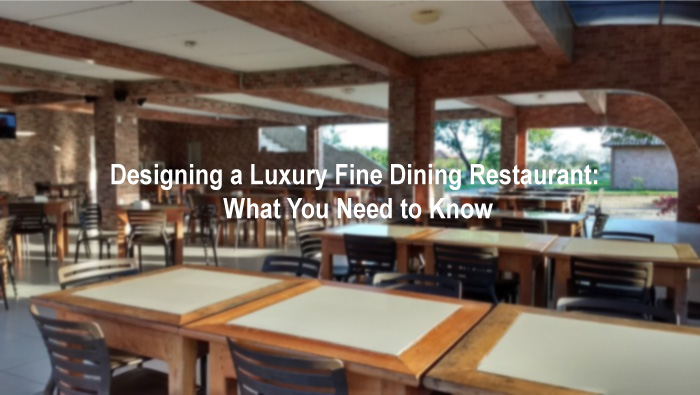
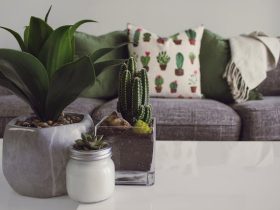




Leave a Review